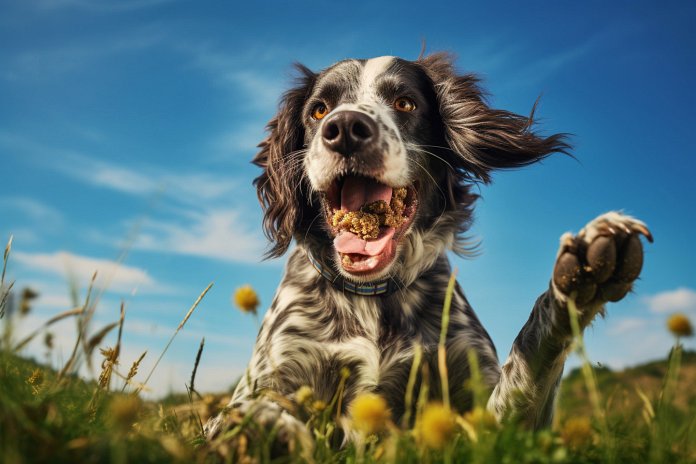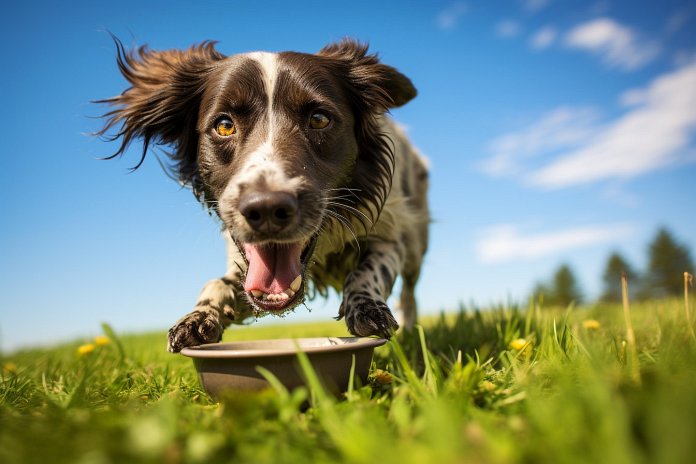
Your dog’s taste and nutrition are both important factors to consider when deciding what to feed them. There are many different options available in the world of dog food, making it difficult to know where to start. Understanding your dog’s sense of taste, including their preference for texture, can help you choose the right food for them.
Signs Your Dog Likes Moist Food
If your dog suddenly shows distaste for their food, adding water and warming it up may help. Dogs are attracted to food based on smell and texture, so an unappealing texture can cause them to ignore their food. Experimenting with different textures can help you find a food that your dog enjoys and finds rewarding.
Body Language
Signs that your dog enjoys moist food include wagging their tail, licking their lips, drooling, and raising their paw. Other signs include eating the food right up, begging for more, and exhibiting excited behavior.
History Behind Dogs Tasting Moist Food
Many dog owners warm their dog’s food because it is suggested by pet food companies. Dogs have evolved from their wild ancestors who relied on a carnivorous diet, making them less interested in salty food. Texture is important to dogs, and a variety of textures in their diet can be beneficial.
Science Behind Dogs Tasting Moist Food
Dogs experience food differently from humans, relying on their nose and taste buds. Texture also plays a role in their enjoyment of food. Wet food is easier to digest and has a more attractive aroma to dogs.
Training Your Dog to Taste Moist Food
If your dog is a picky eater, adding water to their dry kibble may make it more appealing. Wet food provides hydration and is easier to chew, making it suitable for older dogs. Dry food is a good option for dogs that graze throughout the day and is highly nutritious. Wet food is more potent in taste and can be introduced to your dog’s diet with the guidance of a vet.
Conclusion
Considering your dog’s taste and preferences when choosing their food can help ensure they receive the nutrients they need. Experimenting with different textures and consulting with a vet can help you find the best option for your dog.
“Texture and taste go paw in paw when it comes to satisfying your dog’s appetite.”

Tips & Things to Know
1️⃣ Consider your dog’s sense of taste and texture when choosing their food. Dogs have four taste sensations and can discern between different textures. Wet food is often more appealing to dogs and easier for them to digest.
2️⃣ Observe your dog’s body language to determine if they enjoy moist food. Signs such as wagging tail, lip licking, drooling, and raised paw indicate that your dog likes the texture and taste of moist food.
3️⃣ When introducing moist food to your dog’s diet, consult with your vet first and start small. Add a bit of water to their dry food to gauge their response. Never completely stop their current food, as sudden changes can upset their system.
Frequently Asked Questions, Answered ✅
1. What are the different options available for dog food?
Answer: The options for dog food include dry kibble, canned wet food, raw food, and dehydrated options.
2. How does texture affect a dog’s food preferences?
Answer: Texture plays a crucial role in a dog’s food preferences. Dogs may be more attracted to wet food due to its moist texture, which is easier to digest and more enjoyable for them.
3. How can I tell if my dog likes moist food?
Answer: Signs that your dog likes moist food include wagging tail, lip licking, drooling, and raised paw. Other signs include eating the food right up, begging for more, and showing excited behavior.
4. Why do some dog owners warm their dog’s food?
Answer: Many dog owners warm their dog’s food to bring it to room temperature and make it moist for their consumption. This is because some pet food companies suggest serving their products at room temperature for the full experience.
5. How do dogs experience food differently from humans?
Answer: Dogs rely primarily on their sense of smell when eating, followed by their taste buds. Texture also plays a significant role in a dog’s food experience. Dogs may be attracted to certain smells, even if humans find them disgusting, and they enjoy a variety of textures in their diet.